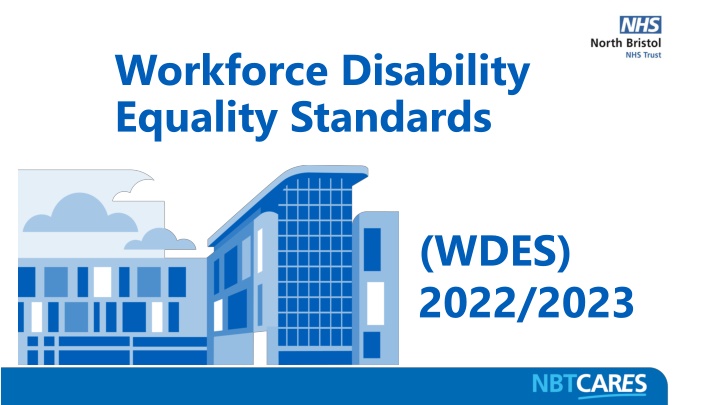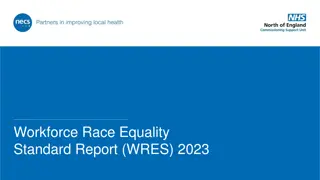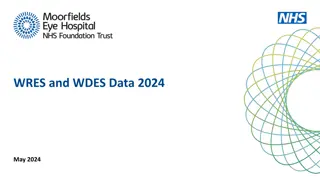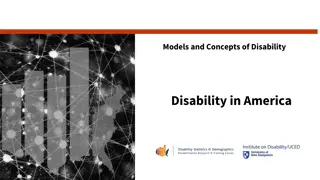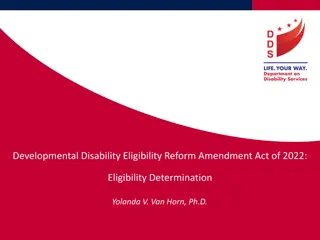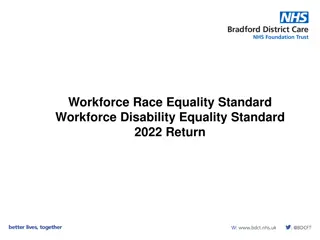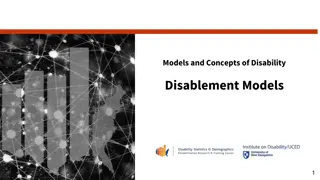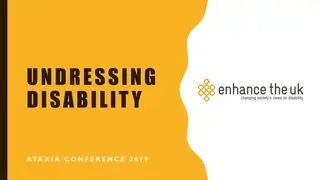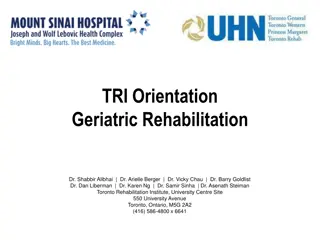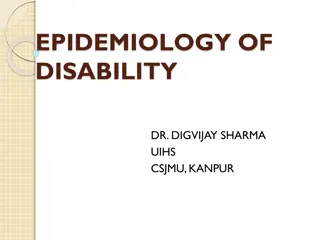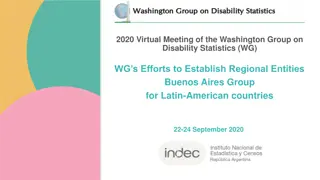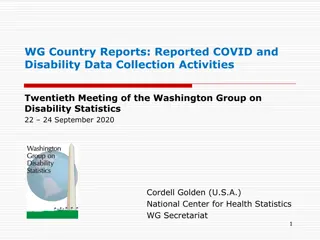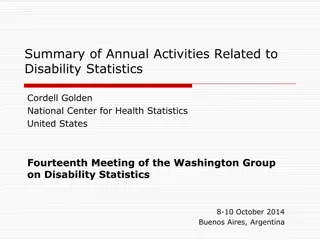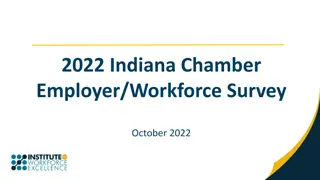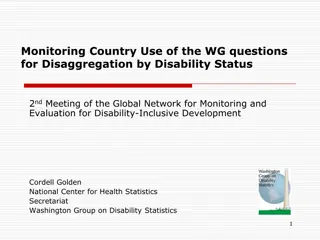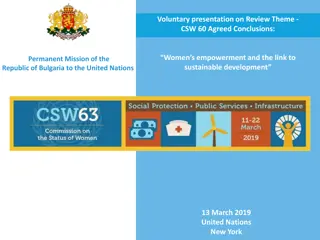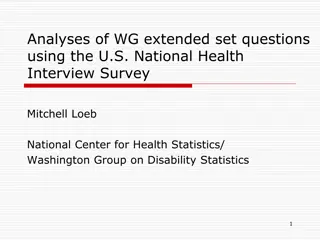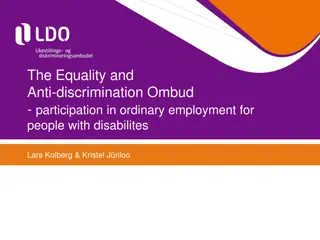Workforce Disability Equality Standards (WDES) 2022/2023 Update
The Workforce Disability Equality Standards (WDES) 2022/2023 update reveals important insights on staff composition, appointment likelihood for disabled individuals, staff engagement, board representation, and experiences of harassment and bullying. The report highlights both areas of improvement and challenges faced in achieving equality standards within the workforce. Key findings include increases in staff identifying as disabled, notable declines in certain staff bands, differences in appointment rates for disabled staff, staff engagement scores, and experiences of harassment from patients, relatives, and colleagues. The report also indicates efforts towards creating a more inclusive and supportive work environment for disabled staff.
Download Presentation

Please find below an Image/Link to download the presentation.
The content on the website is provided AS IS for your information and personal use only. It may not be sold, licensed, or shared on other websites without obtaining consent from the author.If you encounter any issues during the download, it is possible that the publisher has removed the file from their server.
You are allowed to download the files provided on this website for personal or commercial use, subject to the condition that they are used lawfully. All files are the property of their respective owners.
The content on the website is provided AS IS for your information and personal use only. It may not be sold, licensed, or shared on other websites without obtaining consent from the author.
E N D
Presentation Transcript
Workforce Disability Equality Standards (WDES) 2022/2023
NBT Workforce composition 2022/2023 Workforce Disability Equality Standard Staff composition at NBT of Disabled staff is 2.55% compared to 74,8% staff identifying as non-disabled, this is a 0.75% increase over 2 years 2.5 % decrease in the proportion of staff where their disability status is unknown from 25% in 2021 to 22% in 2023. All data is for the NBT position as of 31 March 2023, unless otherwise stated. All permanent, fixed term contract and non- executive director level staff are included. Agency, bank and locum staff are not included.
WDES Result update 2022/2023 (1) Workforce Disability Equality Standard There was an overall increase between 2022 and 2023 in staff identifying as disabled , including bands 2,3,5,6,7,8d, consultants and non-executive directors. However, there were notable declines across Band 8 overall in last 12 months. People who declare as disabled are 1.15 less likely to be appointed after short- listing, compared to the everyone else (those who say no disability and not stated ). However slight improvement from last year s rate of 1.18%. % Disabled staff in AfC bands 8a and above Indicator 1 Total number of NBT colleagues Disabled: Non-Disabled: Likelihood of appointment Indicator 2 Formal capability Indicator 3 Disabled staff are more likely to enter formal capability process at 2.45 on average compared to non-disabled staff. Improved since previous years figure of 5.08. Staff engagement score Indicator 9 Disabled staff engagement is 6.4 compared to 7 for non-disabled staff and is slight decrease from the previous year but is equal to the national average Board Representative of disabled staff Indicator 10 1 disabled member is on the Trust Board and has voting rights out of 15 Board members in total.
WDES Result update 2022/2023 (2) Workforce Disability Equality Standard % of staff experiencing harassment bullying, or abuse from patients, relatives or members of the public in the last 12 months Indicator four ai Total number of NBT colleagues Disabled: Non-Disabled: 34.8% of Disabled Staff are experiencing this compared to staff with non-disabled staff at 24.8%, this is almost 2% worse than national average % of staff who experienced bullying, harassment or abuse at work from managers in the last 12 months Indicator 10 13.4% of Disabled Staff are experiencing this compared to non-disabled staff at 7.8%. NBT is almost 4% better than the national average 26.3% of Disabled Staff are experiencing this compared to non- disabled staff at 15.7%, NBT s position is slightly better than national average % of staff experiencing harassment bullying, or abuse from other colleagues in the last 12 months Indicator four aii 47.6% of Disabled Staff are reporting this, compared to non- disabled staff at 48.3%, NBT is slightly better 0.8% than national average % staff who experienced bullying - they or a colleague reported it Indicator 4b
WDES Result update 2022/2023 (3) Workforce Disability Equality Standard 31.4% of Disabled Staff at NBT are satisfied that their organisation values their work compared with non-disabled staff at 44.1%. This is almost 1%better than national average Total number of NBT colleagues Disabled: Non-Disabled: % of staff satisfied that their organisation values their work Indicator five % of staff who have felt pressure from their manager to come to work, despite not feeling well enough to perform their duties Indicator six 26.2% of Disabled Staff felt pressure to come to work while unwell compared to non-disabled staff at 18.4%. NBT is almost 4% better than the national average % of staff believing the Trust has equal opportunities for career development and promotion Indicator seven 52.4% of Disabled Staff believe the Trust provides equal opportunities for career progression compared to non- disabled staff at 54.4%. % disabled staff saying that their employer has made adequate adjustment(s) to enable them to carry out their work. Indicator eight 72.9% of Disabled Staff say reasonable adjustments were made at NBT, which is 1% better than national average Key Info taken from: Staff Survey ESR
